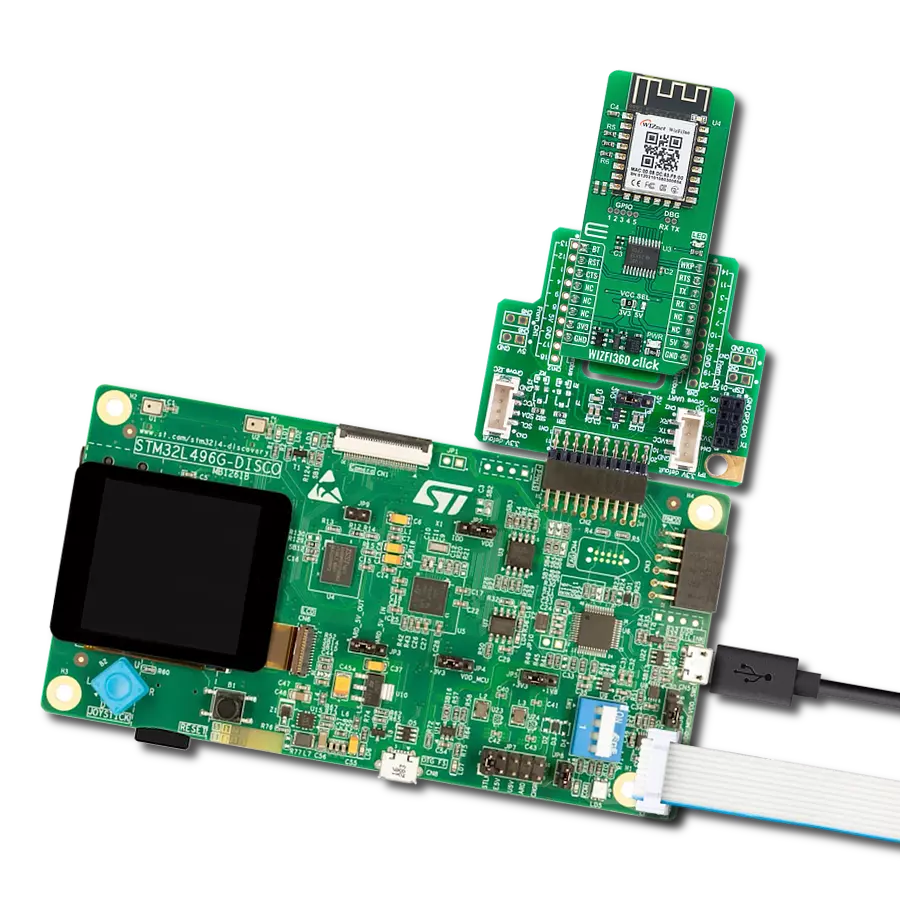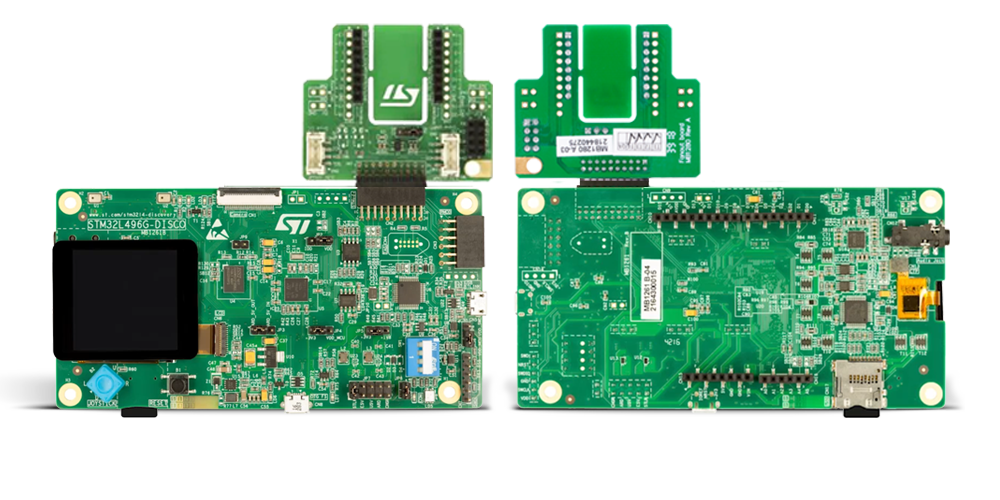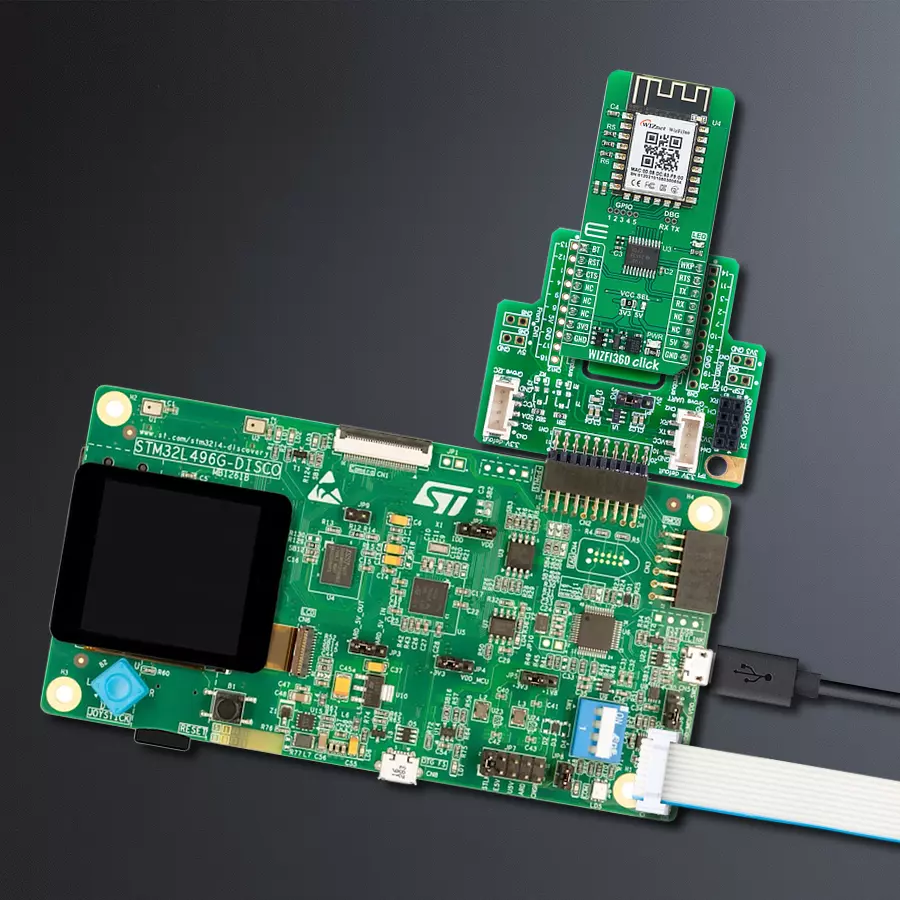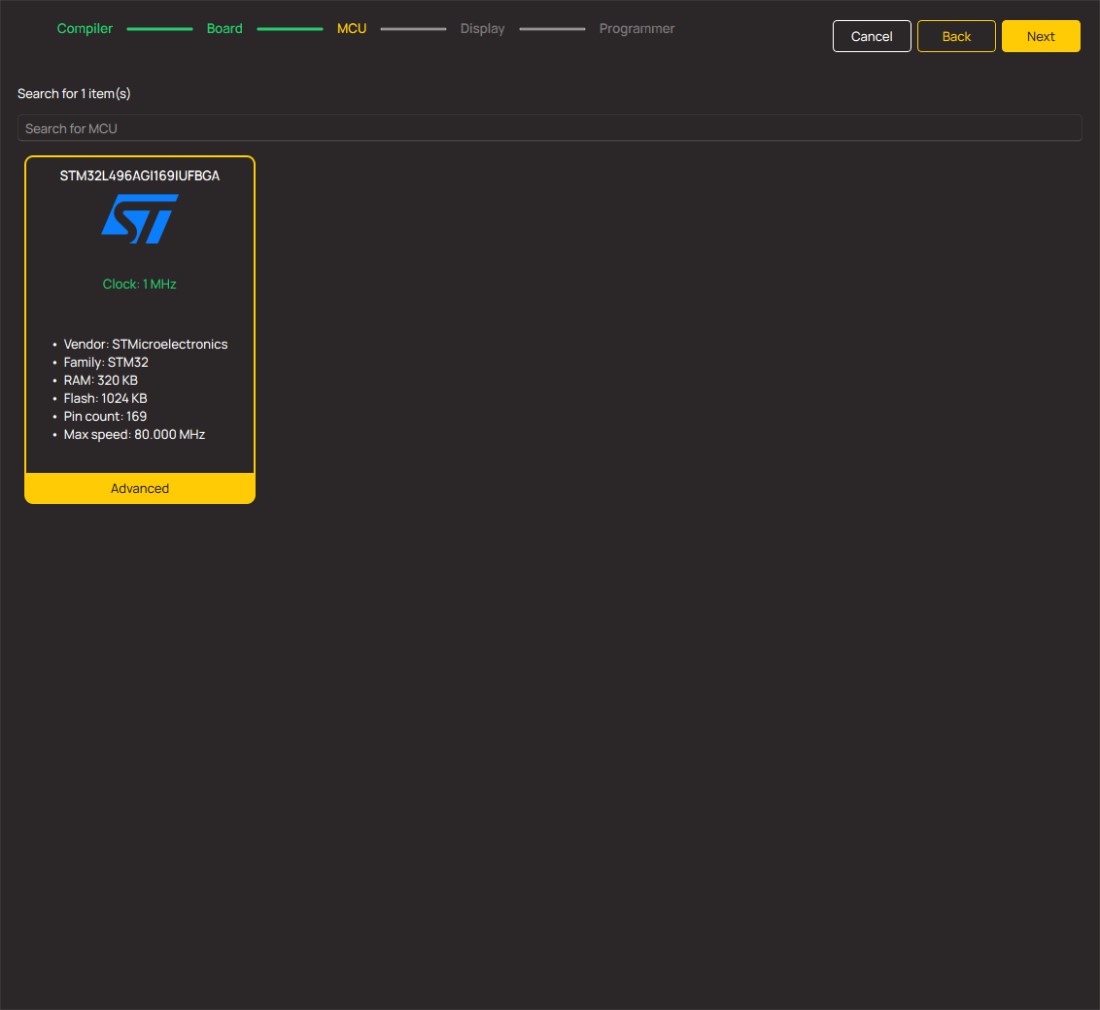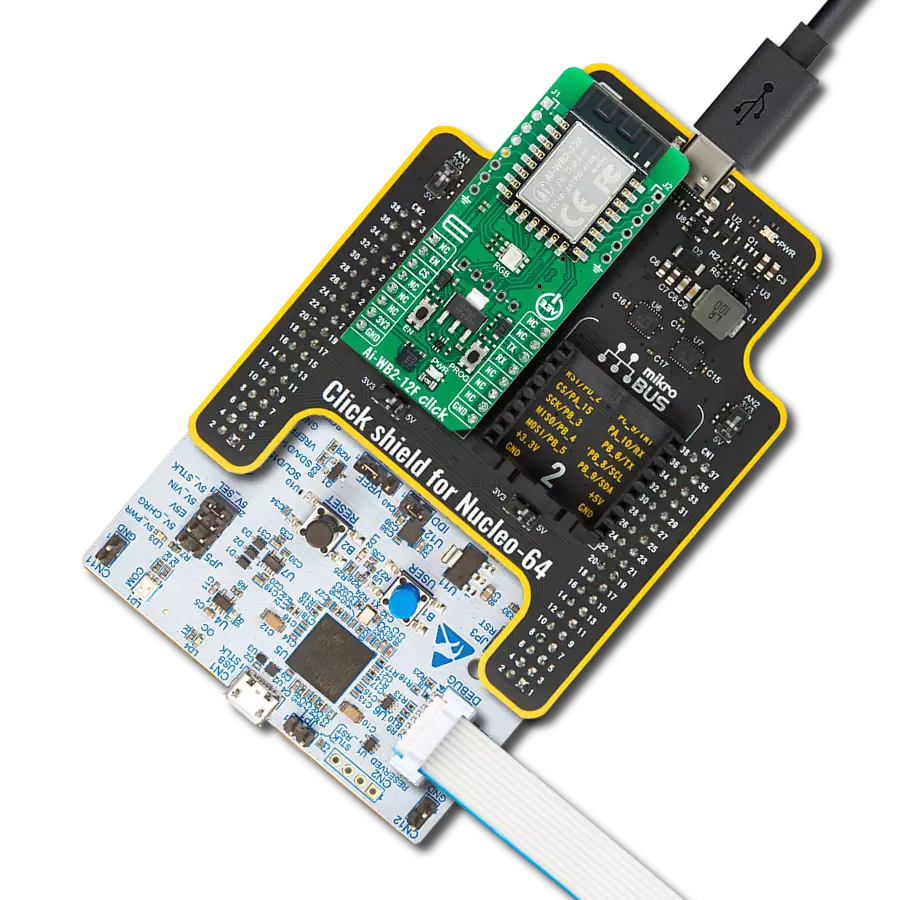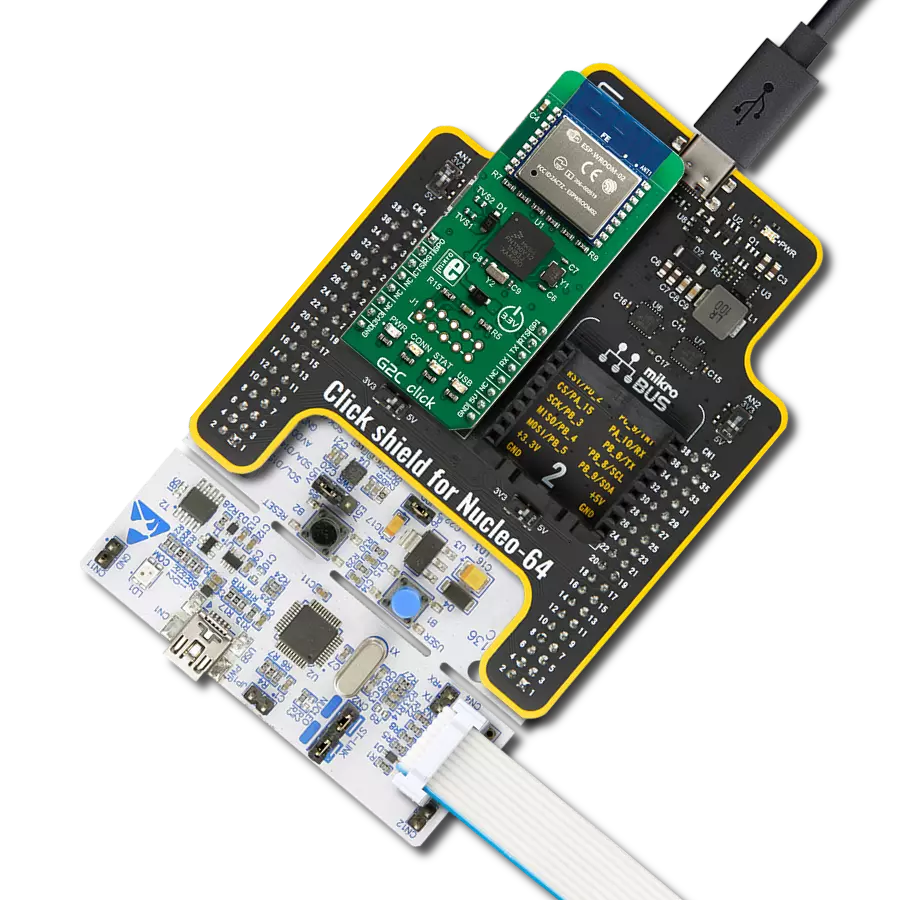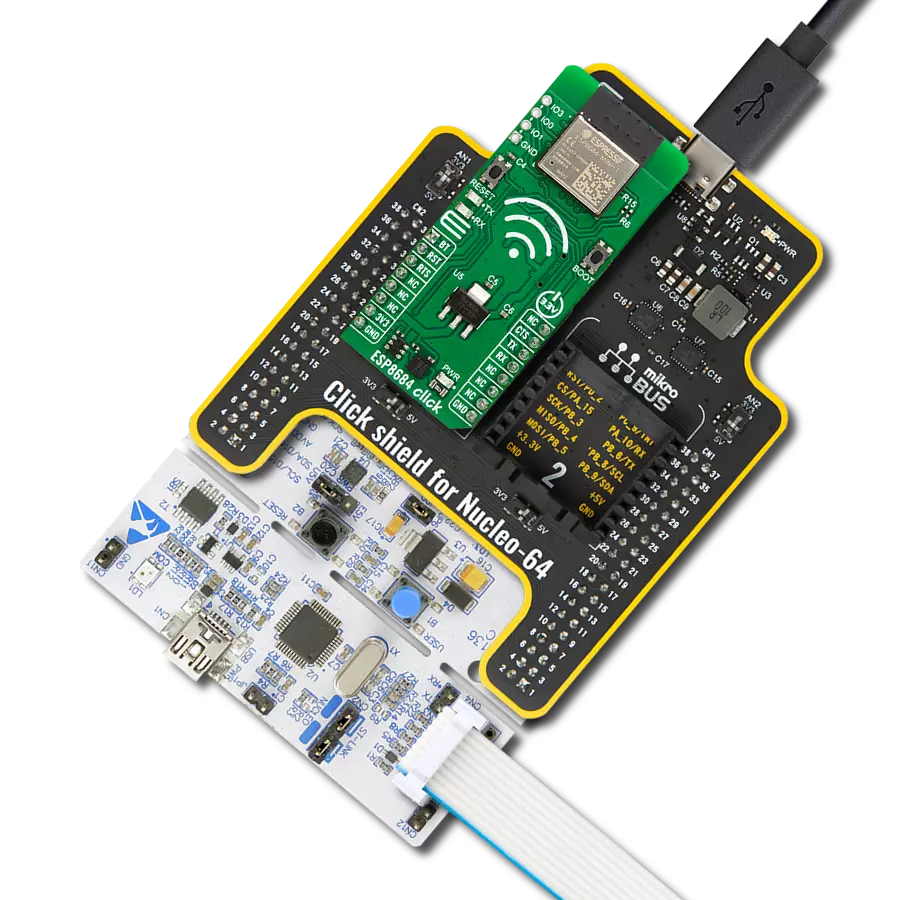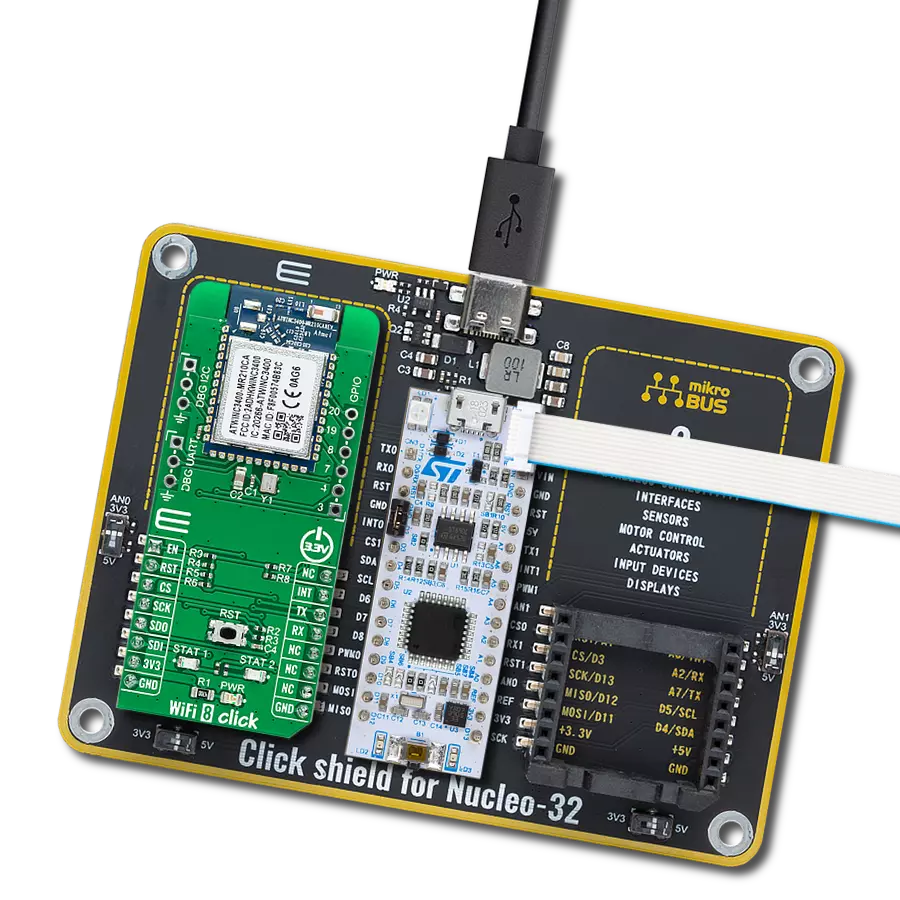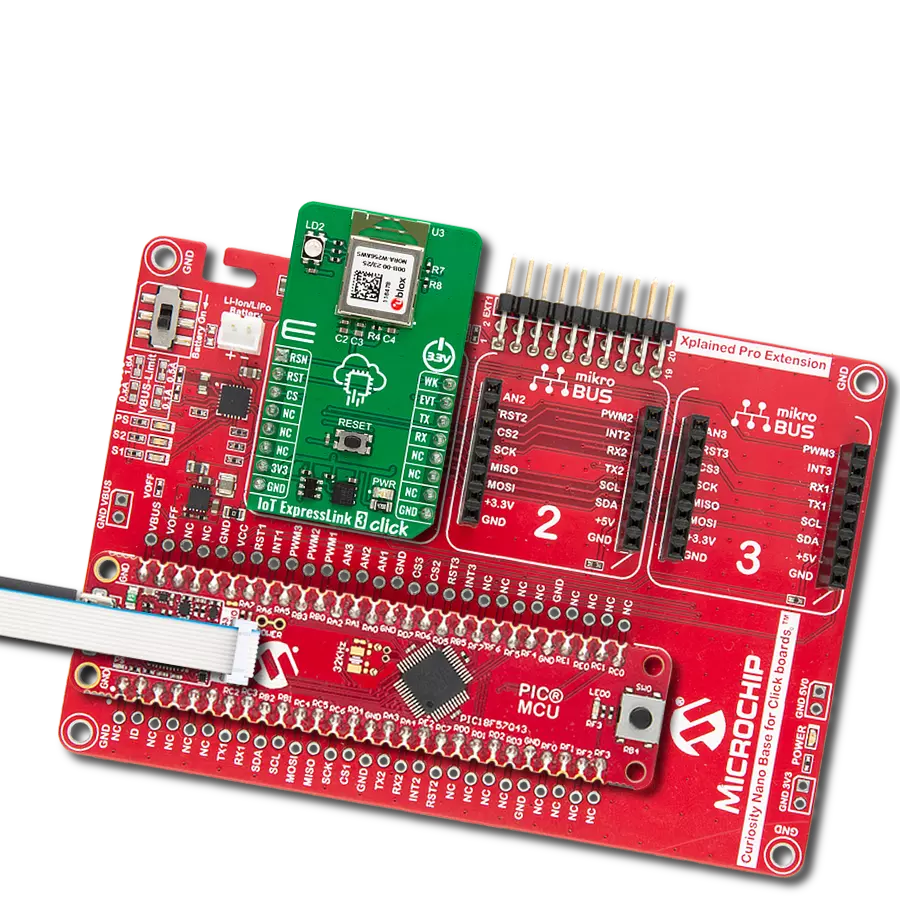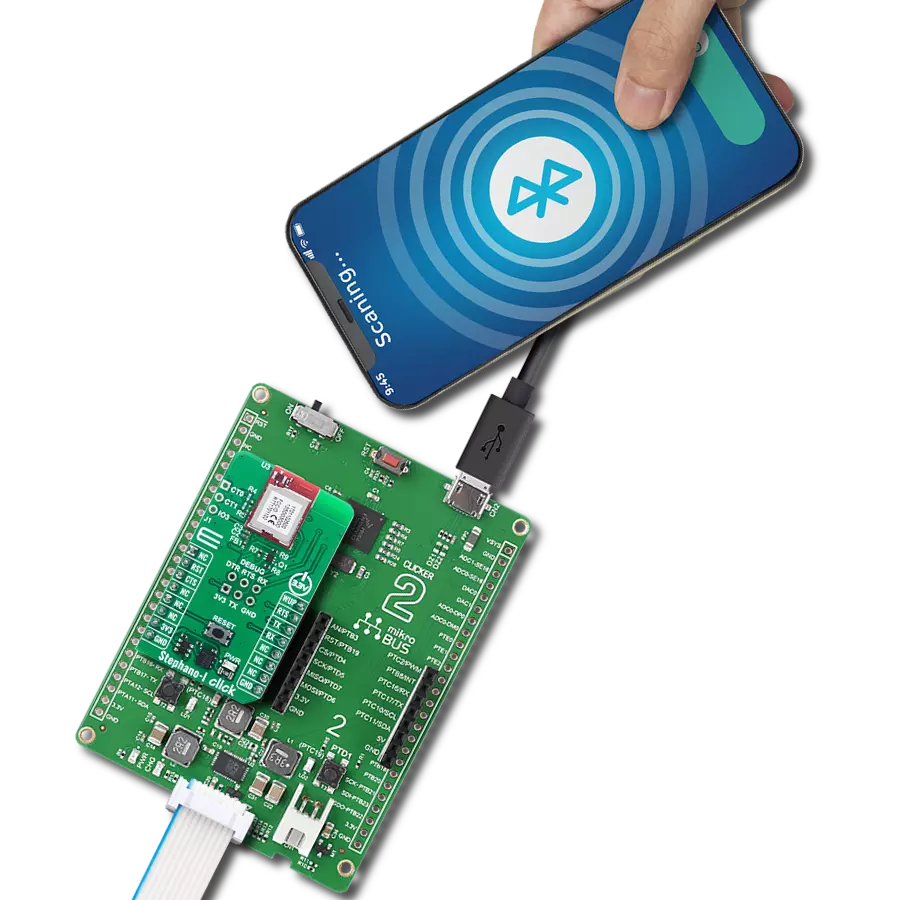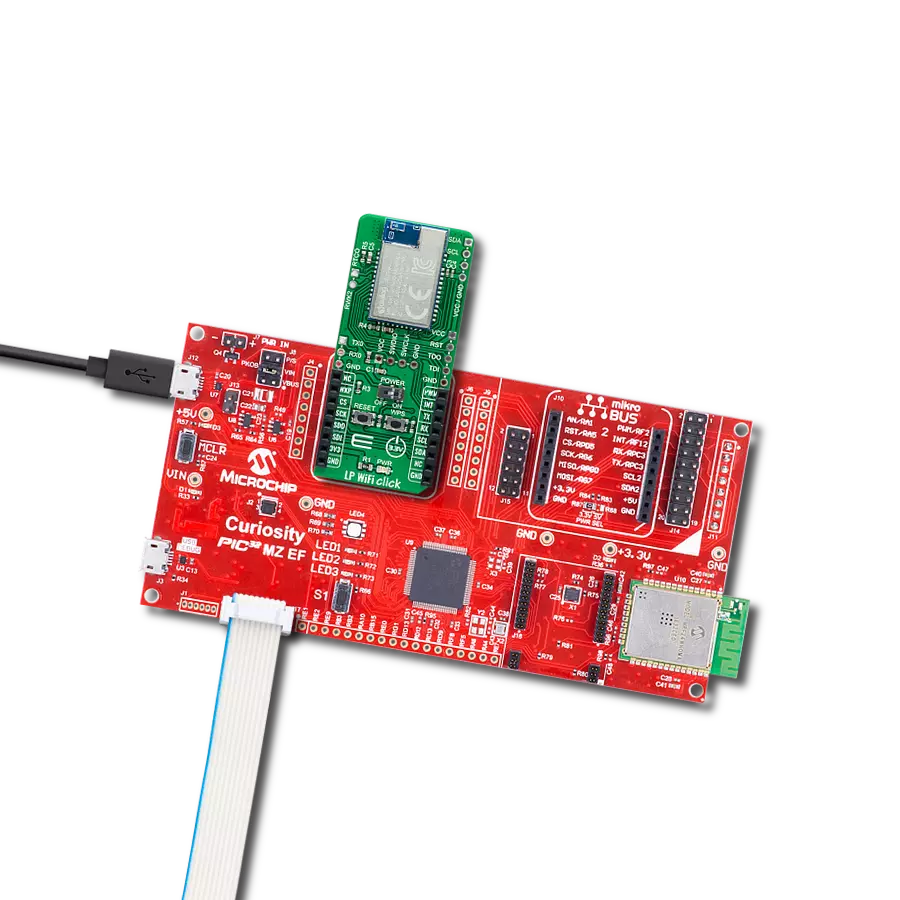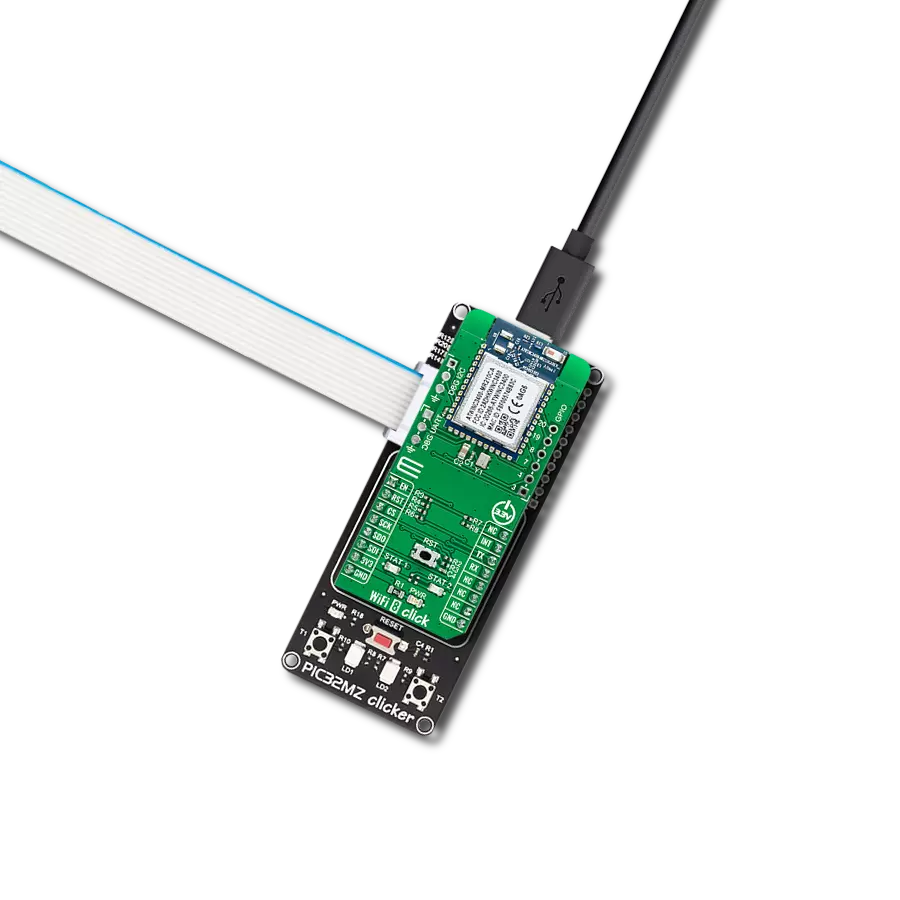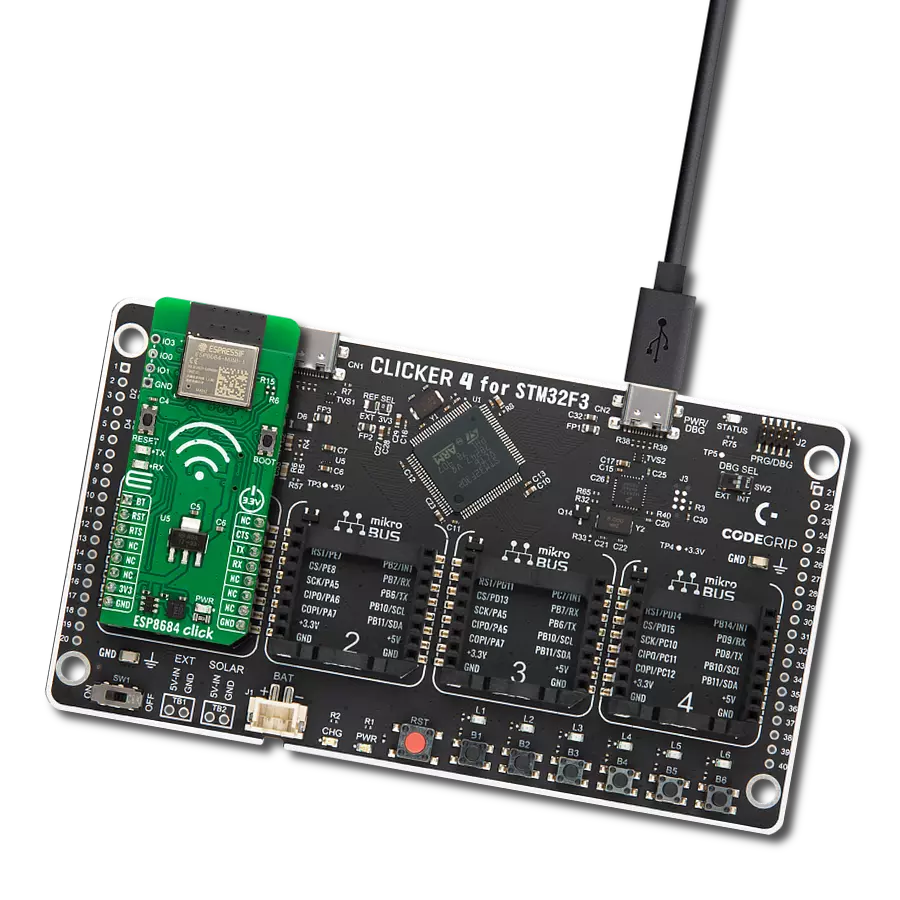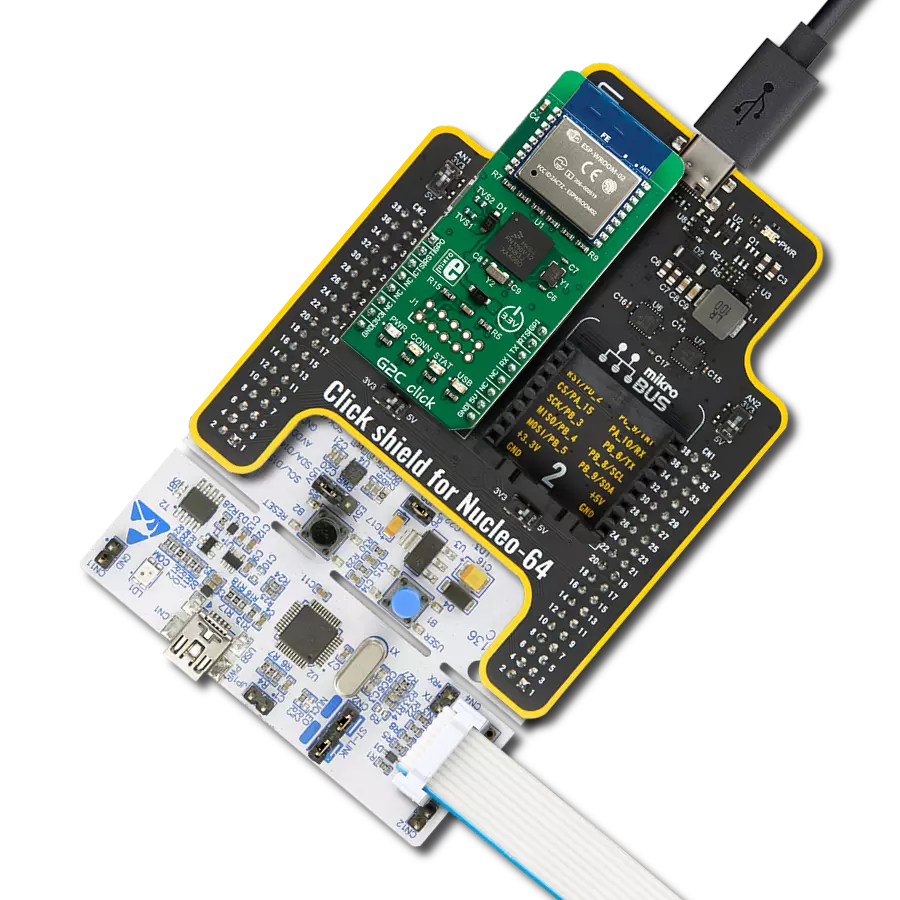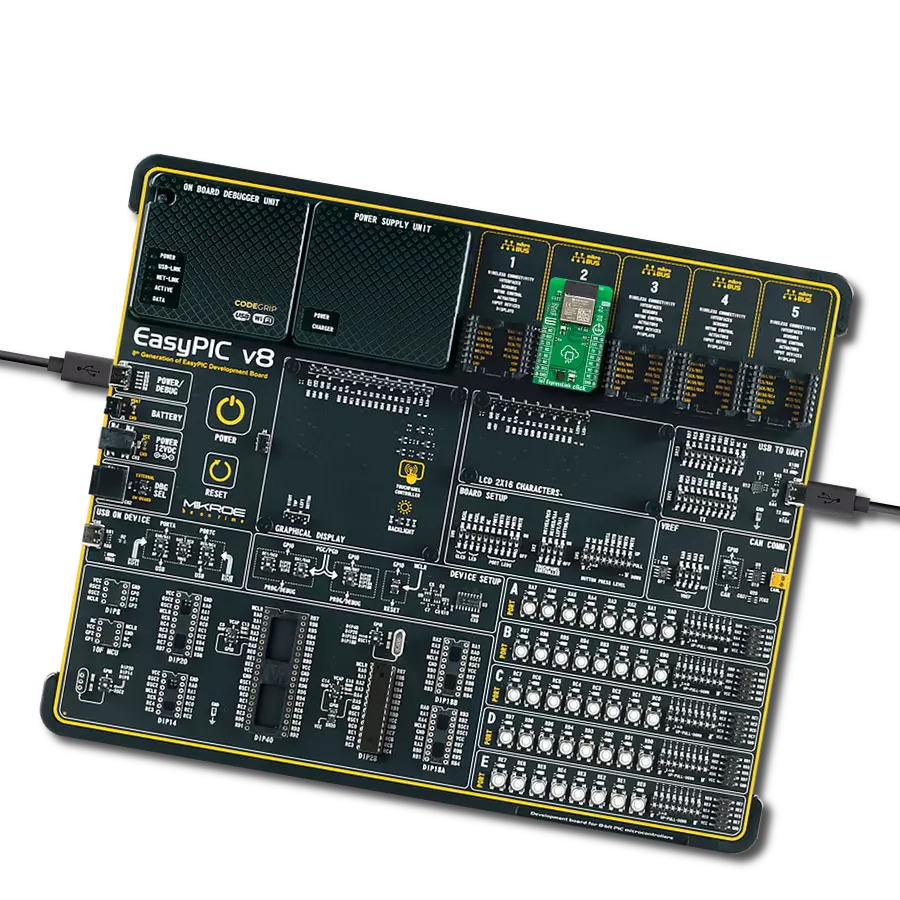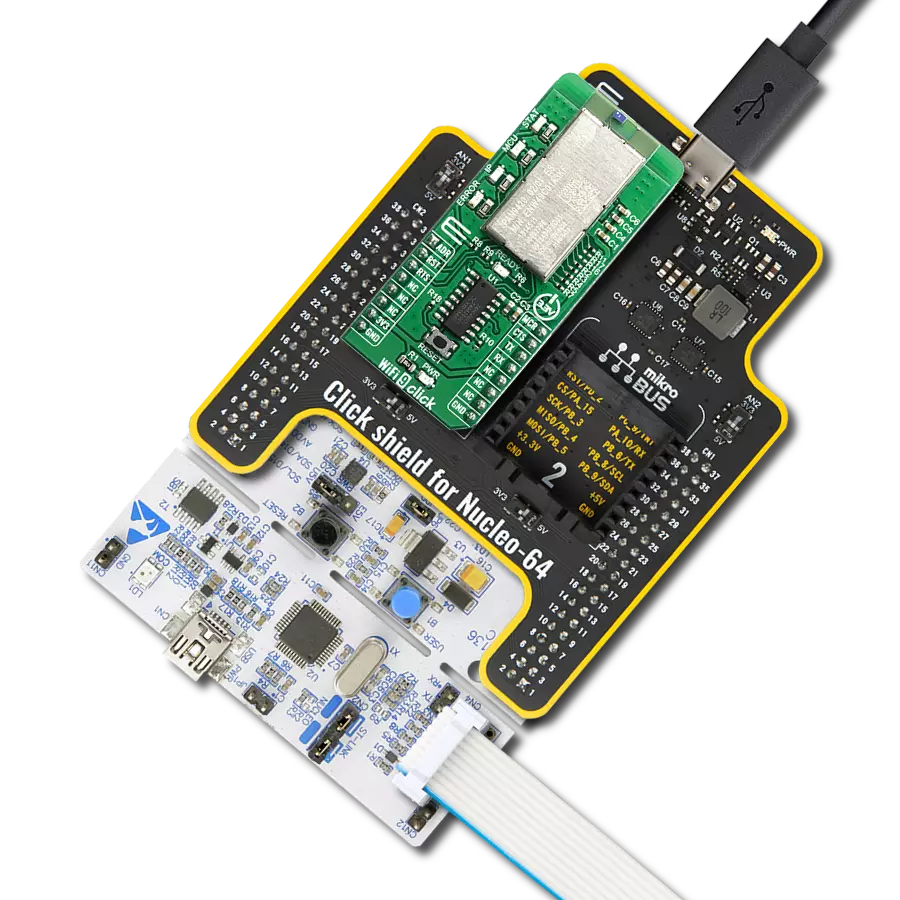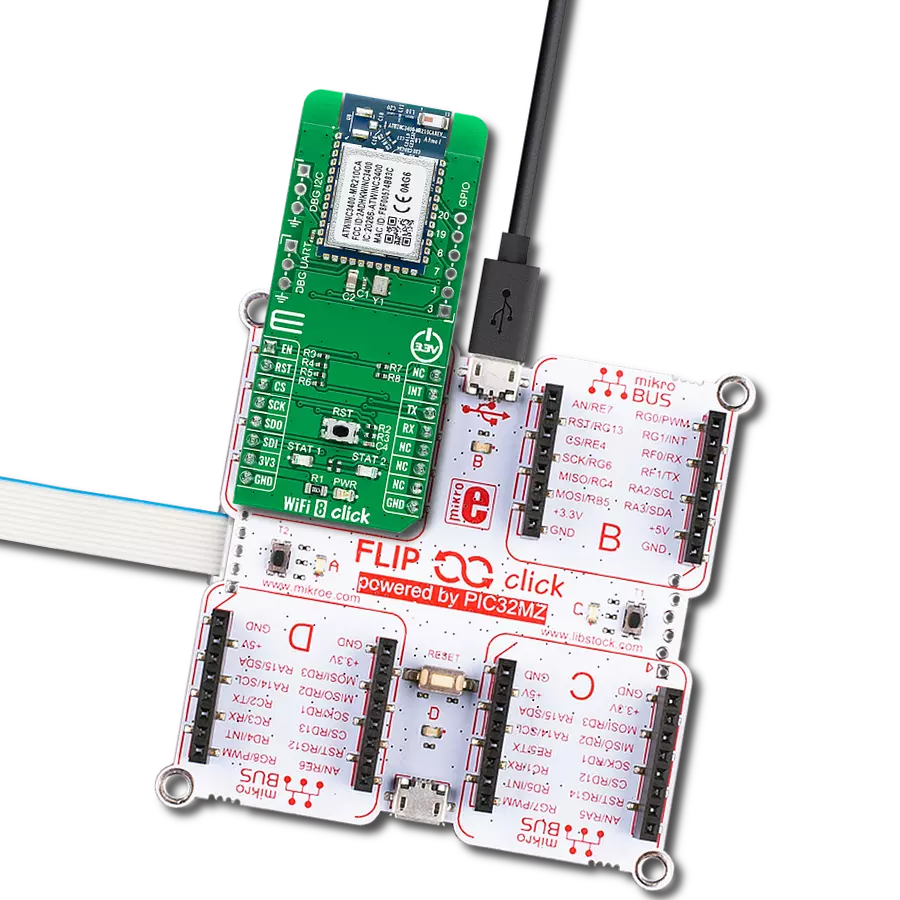WiFi solution for industrial IoT, inventory management, building automation, and other applications requiring reliable data transfer
A
A
Hardware Overview
How does it work?
WIZFI360 Click is based on the WIZFI360, an advanced and cost-effective WiFi module from WIZnet designed for industrial-grade applications. The WIZFI360 features low power consumption and full compliance with the IEEE802.11 b/g/n standard. This allows the module to support WiFi 2.4G with SoftAP, Station, and SoftAP+Station modes, operating within the frequency range of 2400MHz to 2483.5MHz. Thanks to the WIZFI360, this Click board™ offers a versatile serial port baud rate of up to 2Mbps, catering to various application requirements like reliable WiFi connectivity in various industrial applications. The WIZFI360 offers robust features designed to ensure versatility and reliability in wireless networks. One of its standout capabilities is supporting both "Data pass-through" and "AT command data transfer" modes, which provide flexible data communication options. The module's serial AT command configuration capability further enhances its usability, allowing for easy setup and management. Additionally, it supports multiple operating modes, including TCP Server, TCP Client, and UDP, making it adaptable to various networking requirements. With configurable operating channels from 1 to 13 and automatic 20MHz/40MHz bandwidth support, the WIZFI360 Click ensures optimal performance and adaptability to different network environments.
Security and connectivity are also prioritized in the WIZFI360 Click's design. It supports WPA_PSK and WPA2_PSK encryption, ensuring secure wireless communication. The module accommodates a wide range of serial port baud rates from 600bps to 2Mbps, with 16 common values, catering to diverse application needs. It can handle up to 5 simultaneous TCP/UDP links, providing robust connectivity options. For ease of network integration, it supports automatic IP address acquisition from the DHCP server in Station mode and offers DHCP services for Wireless LAN clients in AP mode. DNS support allows for server communication using domain names, while the "Keep-Alive" feature monitors TCP connections to maintain stability. Additionally, the "Ping" feature aids network status monitoring, and the built-in SNTP client ensures accurate synchronization of network time. The module also includes a unique built-in MAC address with user configurability, enhancing network security and management. Communication between the WIZFI360 module and the host MCU is established through a UART interface, standard UART RX and TX pins, and hardware flow control pins (CTS/RTS). The default communication speed is 115200bps, ensuring efficient data exchange. The board also includes a reset (RST) pin for hard resetting the module, a
wake-up WKP pin for waking the module from Sleep mode, and a Boot (BT) pin to trigger the bootloader mode for firmware updates when set to a low logic level during reset. The WIZFI360 Click also features a red LED that indicates data transmission and reception activity, providing a clear visual cue for network communication status. In addition to this, the board also includes two unpopulated headers for added functionality. The first header, DBG, serves as a UART0 interface for debugging and firmware upgrades, allowing users to troubleshoot and update the module easily. The second header, labeled GPIO, offers several GPIO pins from the module (from IO1 to IO5), allowing users to utilize these pins for various custom applications and additional interfacing requirements. This Click board™ can operate with both 3.3V and 5V logic voltage levels selected via the VCC SEL jumper. Given that the WIZFI360 module operates at 3.3V, a logic-level translator, TXS0108E, is also used for proper operation and an accurate signal-level translation. This way, both 3.3V and 5V capable MCUs can use the communication lines properly. Also, this Click board™ comes equipped with a library containing easy-to-use functions and an example code that can be used as a reference for further development.
Features overview
Development board
The 32L496GDISCOVERY Discovery kit serves as a comprehensive demonstration and development platform for the STM32L496AG microcontroller, featuring an Arm® Cortex®-M4 core. Designed for applications that demand a balance of high performance, advanced graphics, and ultra-low power consumption, this kit enables seamless prototyping for a wide range of embedded solutions. With its innovative energy-efficient
architecture, the STM32L496AG integrates extended RAM and the Chrom-ART Accelerator, enhancing graphics performance while maintaining low power consumption. This makes the kit particularly well-suited for applications involving audio processing, graphical user interfaces, and real-time data acquisition, where energy efficiency is a key requirement. For ease of development, the board includes an onboard ST-LINK/V2-1
debugger/programmer, providing a seamless out-of-the-box experience for loading, debugging, and testing applications without requiring additional hardware. The combination of low power features, enhanced memory capabilities, and built-in debugging tools makes the 32L496GDISCOVERY kit an ideal choice for prototyping advanced embedded systems with state-of-the-art energy efficiency.
Microcontroller Overview
MCU Card / MCU
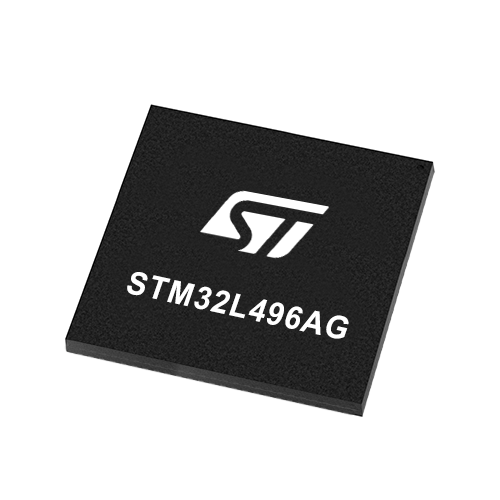
Architecture
ARM Cortex-M4
MCU Memory (KB)
1024
Silicon Vendor
STMicroelectronics
Pin count
169
RAM (Bytes)
327680
Used MCU Pins
mikroBUS™ mapper
Take a closer look
Click board™ Schematic

Step by step
Project assembly
Software Support
Library Description
This library contains API for WIZFI360 Click driver.
Key functions:
wizfi360_write_command- This function writes a desired command by using the UART serial interface.wizfi360_write_cmd_param- This function writes a desired command, prefix and parameter by using UART serial interface.wizfi360_send_message- This function sends messages to the host in normal transmission mode using the UART serial interface.
Open Source
Code example
The complete application code and a ready-to-use project are available through the NECTO Studio Package Manager for direct installation in the NECTO Studio. The application code can also be found on the MIKROE GitHub account.
/*!
* @file main.c
* @brief WIZFI360 Click Example.
*
* # Description
* This example demonstrates the use of the WIZFI360 Click board
* by processing the incoming data and displaying them on the USB UART.
*
* The demo application is composed of two sections :
*
* ## Application Init
* Initializes the driver, connects to the desired WiFi network,
* and then connects to the TCP/UDP server and configures SNTP parameter.
*
* ## Application Task
* The demo app displays current time data, sends data messages to the TCP/UDP server,
* reads and processes all incoming data and displays them on the USB UART.
*
* ## Additional Function
* - static void wizfi360_clear_app_buf ( void )
* - static void wizfi360_log_app_buf ( void )
* - static err_t wizfi360_process ( wizfi360_t *ctx )
* - static void wizfi360_check_response ( uint8_t *rsp )
*
* @note
* In order for the examples to work without using Planet Debug,
* the user needs to set the SSID and password of the target AP.
*
* @author Nenad Filipovic
*
*/
#include "board.h"
#include "log.h"
#include "wizfi360.h"
// Application buffer size
#define APP_BUFFER_SIZE 200
#define PROCESS_BUFFER_SIZE 200
// Response timeout
#define RESPONSE_TIMEOUT 100000
// Demo data for sending
#define DEMO_SEND_DATA "MikroE WIZFI360 Click"
// Send data length in normal transmission mode
#define DEMO_SEND_DATA_LENGTH "22"
// SSID and password of the target AP
#define DEMO_SSID "MikroE Public"
#define DEMO_PASSWORD "mikroe.guest"
// Example of sending messages to a TCP/UDP echo server
#define DEMO_EXAMPLE_TCP "TCP"
#define DEMO_EXAMPLE_UDP "UDP"
// TCP/UDP echo server IP address and port
#define DEMO_REMOTE_ID "77.46.162.162"
#define DEMO_REMOTE_PORT "51111"
static wizfi360_t wizfi360;
static log_t logger;
static uint8_t app_buf[ APP_BUFFER_SIZE ] = { 0 };
static int32_t app_buf_len = 0;
static uint8_t cmd_buf[ 100 ] = { 0 };
/**
* @brief WIZFI360 clearing application buffer.
* @details This function clears memory of application buffer and reset its length.
* @note None.
*/
static void wizfi360_clear_app_buf ( void );
/**
* @brief WIZFI360 log application buffer.
* @details This function logs data from application buffer to USB UART.
* @note None.
*/
static void wizfi360_log_app_buf ( void );
/**
* @brief WIZFI360 data reading function.
* @details This function reads data from device and concatenates data to application buffer.
* @param[in] ctx : Click context object.
* See #wizfi360_t object definition for detailed explanation.
* @return @li @c 0 - Read some data.
* @li @c -1 - Nothing is read.
* See #err_t definition for detailed explanation.
* @note None.
*/
static err_t wizfi360_process ( wizfi360_t *ctx );
/**
* @brief WIZFI360 response check.
* @details This function checks for response and displays the status of response.
* @param[in] rsp Expected response.
* @return Nothing.
*/
static void wizfi360_check_response ( uint8_t *rsp );
void application_init ( void )
{
log_cfg_t log_cfg; /**< Logger config object. */
wizfi360_cfg_t wizfi360_cfg; /**< Click config object. */
/**
* Logger initialization.
* Default baud rate: 115200
* Default log level: LOG_LEVEL_DEBUG
* @note If USB_UART_RX and USB_UART_TX
* are defined as HAL_PIN_NC, you will
* need to define them manually for log to work.
* See @b LOG_MAP_USB_UART macro definition for detailed explanation.
*/
LOG_MAP_USB_UART( log_cfg );
log_init( &logger, &log_cfg );
log_info( &logger, " Application Init " );
// Click initialization.
wizfi360_cfg_setup( &wizfi360_cfg );
WIZFI360_MAP_MIKROBUS( wizfi360_cfg, MIKROBUS_1 );
if ( UART_ERROR == wizfi360_init( &wizfi360, &wizfi360_cfg ) )
{
log_error( &logger, " Communication init." );
for ( ; ; );
}
Delay_ms ( 100 );
wizfi360_write_command( &wizfi360, WIZFI360_CMD_AT );
wizfi360_check_response( WIZFI360_RSP_OK );
Delay_ms ( 500 );
wizfi360_write_command( &wizfi360, WIZFI360_CMD_RESTORE );
wizfi360_check_response( WIZFI360_RSP_OK );
Delay_ms ( 500 );
wizfi360_write_command( &wizfi360, WIZFI360_CMD_GMR );
wizfi360_check_response( WIZFI360_RSP_OK );
Delay_ms ( 500 );
wizfi360_write_cmd_param( &wizfi360, WIZFI360_CMD_CWMODE_CUR,
WIZFI360_PREFIX_SYMB_SET_VAL,
WIZFI360_CWMODE_STATION );
wizfi360_check_response( WIZFI360_RSP_OK );
Delay_ms ( 500 );
wizfi360_write_cmd_param( &wizfi360, WIZFI360_CMD_CIPMUX,
WIZFI360_PREFIX_SYMB_SET_VAL,
WIZFI360_CIPMUX_SINGLE_CONN );
wizfi360_check_response( WIZFI360_RSP_OK );
Delay_ms ( 500 );
wizfi360_write_cmd_param( &wizfi360, WIZFI360_CMD_CWDHCP_CUR,
WIZFI360_PREFIX_SYMB_SET_VAL,
WIZFI360_CWDHCP_STATION_DHCP );
wizfi360_check_response( WIZFI360_RSP_OK );
Delay_ms ( 500 );
memset( cmd_buf, 0, 100 );
strcpy( cmd_buf, WIZFI360_PREFIX_SYMB_QUOTE );
strcat( cmd_buf, DEMO_SSID );
strcat( cmd_buf, WIZFI360_PREFIX_SYMB_QUOTE );
strcat( cmd_buf, WIZFI360_PREFIX_SYMB_SEPARATOR );
strcat( cmd_buf, WIZFI360_PREFIX_SYMB_QUOTE );
strcat( cmd_buf, DEMO_PASSWORD );
strcat( cmd_buf, WIZFI360_PREFIX_SYMB_QUOTE );
wizfi360_write_cmd_param( &wizfi360, WIZFI360_CMD_CWJAP_CUR,
WIZFI360_PREFIX_SYMB_SET_VAL,
cmd_buf );
wizfi360_check_response( WIZFI360_RSP_OK );
Delay_ms ( 500 );
wizfi360_inquire_command( &wizfi360, WIZFI360_CMD_CIPSTA_CUR );
wizfi360_check_response( WIZFI360_RSP_OK );
Delay_ms ( 500 );
memset( cmd_buf, 0, 100 );
strcpy( cmd_buf, WIZFI360_PREFIX_SYMB_QUOTE );
strcat( cmd_buf, DEMO_EXAMPLE_TCP );
strcat( cmd_buf, WIZFI360_PREFIX_SYMB_QUOTE );
strcat( cmd_buf, WIZFI360_PREFIX_SYMB_SEPARATOR );
strcat( cmd_buf, WIZFI360_PREFIX_SYMB_QUOTE );
strcat( cmd_buf, DEMO_REMOTE_ID );
strcat( cmd_buf, WIZFI360_PREFIX_SYMB_QUOTE );
strcat( cmd_buf, WIZFI360_PREFIX_SYMB_SEPARATOR );
strcat( cmd_buf, DEMO_REMOTE_PORT );
wizfi360_write_cmd_param( &wizfi360, WIZFI360_CMD_CIPSTART,
WIZFI360_PREFIX_SYMB_SET_VAL,
cmd_buf );
wizfi360_check_response( WIZFI360_RSP_OK );
Delay_ms ( 500 );
wizfi360_write_cmd_param ( &wizfi360, WIZFI360_CMD_CIPSNTPCFG,
WIZFI360_PREFIX_SYMB_SET_VAL,
WIZFI360_ENABLE_TIMEZONE_1 );
wizfi360_check_response( WIZFI360_RSP_OK );
Delay_ms ( 500 );
log_info( &logger, " Application Task " );
}
void application_task ( void )
{
wizfi360_inquire_command( &wizfi360, WIZFI360_CMD_CIPSNTPTIME );
wizfi360_check_response( WIZFI360_RSP_OK );
Delay_ms ( 1000 );
wizfi360_write_cmd_param( &wizfi360, WIZFI360_CMD_CIPSEND,
WIZFI360_PREFIX_SYMB_SET_VAL,
DEMO_SEND_DATA_LENGTH );
wizfi360_check_response( WIZFI360_RSP_READY_FOR_SEND );
wizfi360_send_message( &wizfi360, DEMO_SEND_DATA );
wizfi360_check_response( WIZFI360_RECEIVE );
Delay_ms ( 1000 );
Delay_ms ( 1000 );
Delay_ms ( 1000 );
Delay_ms ( 1000 );
Delay_ms ( 1000 );
}
int main ( void )
{
/* Do not remove this line or clock might not be set correctly. */
#ifdef PREINIT_SUPPORTED
preinit();
#endif
application_init( );
for ( ; ; )
{
application_task( );
}
return 0;
}
static void wizfi360_clear_app_buf ( void )
{
memset( app_buf, 0, app_buf_len );
app_buf_len = 0;
}
static void wizfi360_log_app_buf ( void )
{
for ( int32_t buf_cnt = 0; buf_cnt < app_buf_len; buf_cnt++ )
{
log_printf( &logger, "%c", app_buf[ buf_cnt ] );
}
}
static err_t wizfi360_process ( wizfi360_t *ctx )
{
uint8_t rx_buf[ PROCESS_BUFFER_SIZE ] = { 0 };
int32_t overflow_bytes = 0;
int32_t rx_cnt = 0;
int32_t rx_size = wizfi360_generic_read( ctx, rx_buf, PROCESS_BUFFER_SIZE );
if ( ( rx_size > 0 ) && ( rx_size <= APP_BUFFER_SIZE ) )
{
if ( ( app_buf_len + rx_size ) > APP_BUFFER_SIZE )
{
overflow_bytes = ( app_buf_len + rx_size ) - APP_BUFFER_SIZE;
app_buf_len = APP_BUFFER_SIZE - rx_size;
memmove ( app_buf, &app_buf[ overflow_bytes ], app_buf_len );
memset ( &app_buf[ app_buf_len ], 0, overflow_bytes );
}
for ( rx_cnt = 0; rx_cnt < rx_size; rx_cnt++ )
{
if ( rx_buf[ rx_cnt ] )
{
app_buf[ app_buf_len++ ] = rx_buf[ rx_cnt ];
}
}
return WIZFI360_OK;
}
return WIZFI360_ERROR;
}
static void wizfi360_check_response ( uint8_t *rsp )
{
uint32_t timeout_cnt = 0;
wizfi360_clear_app_buf( );
wizfi360_process( &wizfi360 );
while ( ( 0 == strstr( app_buf, rsp ) ) &&
( 0 == strstr( app_buf, WIZFI360_RSP_ERROR ) ) )
{
wizfi360_process( &wizfi360 );
if ( timeout_cnt++ > RESPONSE_TIMEOUT )
{
wizfi360_clear_app_buf( );
log_error( &logger, " Timeout!" );
}
Delay_ms ( 1 );
}
Delay_ms ( 1 );
wizfi360_process( &wizfi360 );
if ( strstr( app_buf, rsp ) )
{
wizfi360_log_app_buf( );
log_printf( &logger, "\r\n" );
}
else if ( strstr( app_buf, WIZFI360_RSP_ERROR ) )
{
log_error( &logger, " Command!" );
}
else
{
log_error( &logger, " Unknown!" );
}
}
// ------------------------------------------------------------------------ END
Additional Support
Resources
Category:WiFi
